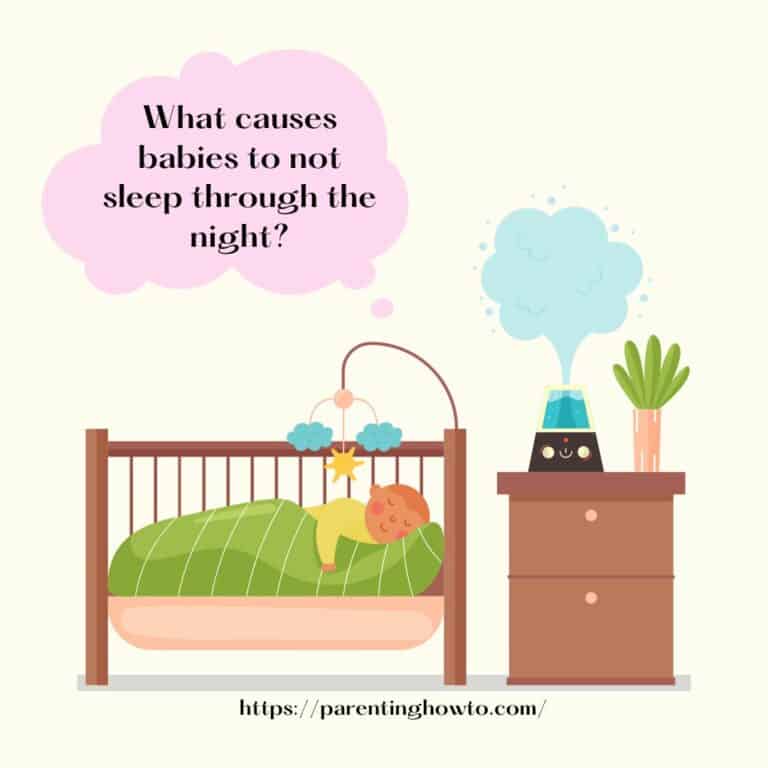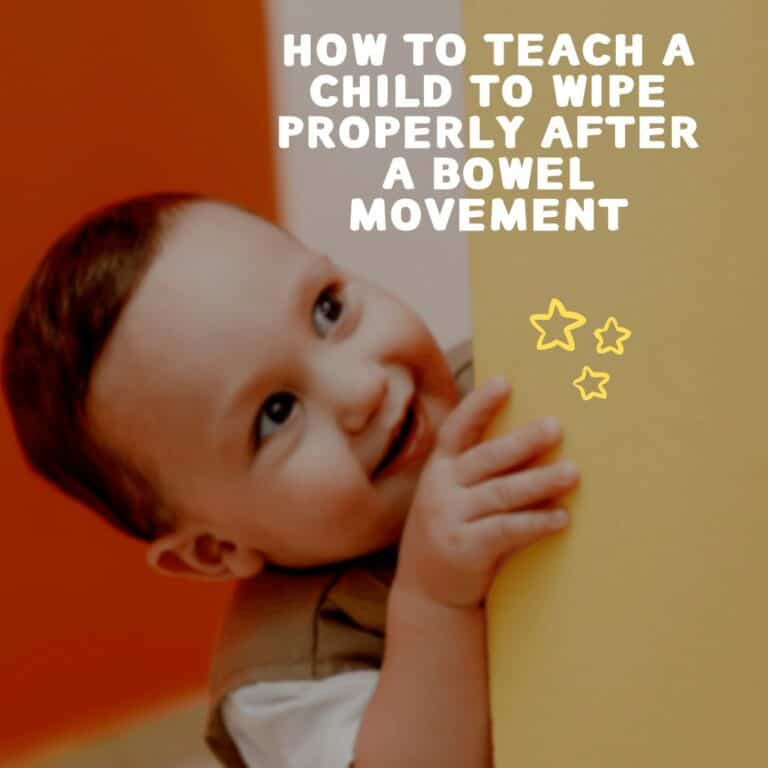You may be wondering when it’s time to transition your baby from a bassinet to a crib. Bassinets are great for newborns as they provide a safe, comfortable space for them to sleep in. However, as babies grow and develop, they need more room and support than bassinets can offer. In this blog post, we’ll explore when is the best time to make the switch from bassinet to crib.
What is a Bassinet?
A bassinet is a specially designed sleeping area for babies, typically in the form of a bed or basket, which is smaller than a regular crib and typically used until a baby is old enough to move into a crib. Bassinets are typically made of fabric, mesh, or wood and can be placed near the parents’ bedside or in a separate room. Bassinets offer many benefits for both parents and babies, such as providing a safe sleeping area for newborns and creating an environment that encourages bonding between parents and babies.
Bassinets are usually designed to be lightweight and portable, making them ideal for travelling or for taking to relatives’ homes. The design of bassinets also makes them easy for parents to move them around the house, allowing them to keep their baby close by during the day. Bassinets also provide a safe and comfortable place for babies to sleep during the night, as they are designed to be more supportive and secure than traditional cribs.
Finally, bassinets are often designed with safety features that traditional cribs don’t have. For example, many bassinets come with adjustable sides that can be lowered or raised depending on the size of the baby, making sure that the baby is always secure and safe. In addition, some bassinets come with built-in latching systems that prevent babies from climbing out of them.
Considerations When Deciding when is a baby too big for a bassinet ?
There are several considerations you should take into account when deciding if your baby is too big for a bassinet. The first and most important consideration is your baby’s age. According to the American Academy of Pediatrics (AAP), babies should use a bassinet when they are between 0-3 months old. After 3 months, it’s usually time to switch to a crib.
Weight is another factor that you should consider when determining if your baby is too big for a bassinet. Most bassinets have a weight limit of 10 lbs, but it is important to check with the manufacturer before purchasing a bassinet. If your baby weighs more than 10 lbs, they may not be able to safely use the bassinet.
Height can also be an indicator of when it’s time to transition to a crib. Many bassinets have height restrictions, so it is important to read the manufacturer guidelines before deciding if your baby is too big for a bassinet. If your baby has outgrown the height limit, it may be time to switch to a crib.
Finally, age is another factor that you should consider when deciding if your baby is too big for a bassinet. Most babies are ready to transition from their bassinet to a crib by the time they are 4-6 months old. At this age, most babies are beginning to show signs of rolling over, which can be dangerous in the confined space of a bassinet.
Weight Capacity of Bassinets
It’s important to understand the weight capacity of the bassinet you are using. Although different bassinets have different weight limits, few bassinets come up with a weight limit of 15 pounds, while some can accommodate up to 20 or even 30 pounds. To be sure, you should always check the manufacturer guidelines to ensure that your baby is not exceeding the weight limit of the bassinet. If your baby is approaching or exceeding this limit, it’s probably time to consider transitioning them to a crib.
When considering the weight capacity of the bassinet, you should also remember that while they are suitable for newborns and babies up to 6 months old, they are not designed for toddlers. The American Academy of Pediatrics (AAP) recommends transitioning your baby out of a bassinet and into a crib once they reach 15 pounds or are able to pull themselves up into a sitting position.
Height Restrictions
When it comes to height restrictions, the general rule of thumb is that a baby should be no longer than 35 inches. Most bassinets are designed for babies who are up to 35 inches long. If your baby is longer than this, then it’s time to start using a crib.
You can also try putting your hand in the bassinet to see if there’s enough room for your baby to move around. If not, then it means they need a bigger space and should transition over to a crib. Keep in mind that different manufacturers may have different height restrictions, so make sure you check the manufacturer guidelines before making a decision.
Age Limits for Bassinets
Bassinets are designed to be used until your baby reaches 6 months of age, or until they reach the weight or height limit of the bassinet. Most traditional bassinets can be used until your baby reaches 15lbs or starts pushing up on their hands and knees, whichever comes first. It’s generally assumed that a bassinet is for newborn babies, but if your little one is past the newborn stage, they are almost too big for a bassinet. Some babies come out as a newborn weighing 10 lbs, so you may need to start looking into cribs sooner than expected. Usually, it is between 10 and 20 lbs that a baby will be outgrowing their bassinet. When you’re trying to determine when to stop using the bassinet, it’s actually more about your baby’s physical development than their age. Babies bigger than 10 pounds are too big for a bassinet and should sleep in a crib, according to the American Academy of Pediatrics (AAP).
Check Manufacturer Guidelines
It is important to check the manufacturer’s guidelines to ensure that your baby’s size and weight are within the recommended limits for your bassinet. While it’s not always possible to predict how big your baby will be, it is important to know what the weight and size limits of your bassinet are so that you can make an informed decision about when it is time to transition your baby from a bassinet to a crib.
It is also important to note that all bassinets have different weight and height limits. Be sure to check the manufacturer’s instructions or website for the exact weight and height limits for your specific model. This information can also be found in the product packaging or manual. Most manufacturers will recommend that babies should not exceed 15 pounds or begin to push up on their hands and knees before transitioning from the bassinet to a crib.
In addition, it is important to consider the age of your baby when deciding if they are too big for a bassinet. Most babies should transition from a bassinet by four to six months of age due to safety and comfort factors. It is also important to note that some bassinets have age limits as well, so be sure to check the manufacturer’s guidelines for specific age requirements.
Alternatives to bassinets
While bassinets are incredibly useful, they aren’t the only option. If you are looking for alternatives, consider the following options:
Mini crib: A mini crib is a great alternative to a bassinet since it’s a smaller version of the traditional crib. It’s the perfect size for your baby and provides them with a safe and secure sleep environment. Most mini cribs come with adjustable height settings so you can adjust it as your baby grows.
Standard crib: If your baby is already too big for a bassinet, consider transitioning them to a standard crib. Cribs are designed to provide a safe sleeping environment for babies up to 3 years old. They come in a variety of styles and sizes, so you can find one that fits your baby’s needs.
Co-sleeping: Co-sleeping is a great option for parents who want to keep their baby close by. There are several products available that make it easy for parents to co-sleep safely with their infant. These products include bedside sleepers, co-sleeper bassinets, and bed rails.
Try Other Options for Sleeping in the Same Room as Your Baby
If your baby is not yet too big for a bassinet, you may want to try other options for sleeping in the same room as them. The American Academy of Pediatrics (AAP) recommends sharing a room with your baby for at least the first 6 months. That’s because having your baby close by can help you to monitor their breathing and make sure they are safe while they sleep.
One popular option is a co-sleeper. This is an extension for your bed that allows you to bed-share with your baby in a safer, controlled way. The co-sleeper is designed to keep your baby at the same height as you, so you can reach out and touch them if needed during the night. It also helps to keep them from rolling out of bed and onto the floor, as you would with a crib.
Another option is to put the crib in your room temporarily. For many little ones, this transition also means sleeping in a different room than mom or dad, so it can be difficult for them to adjust. To help make the switch easier, try blackout curtains or other ways of making the room extra cozy and comfortable for your baby.
Shoulder Straps and Seat Belts: Safety First!
When your baby is in the car seat, you should not be able to fit more than one finger under the harness straps or between the straps and your baby’s body. The harness straps should be snug on your baby’s body and at or below their shoulders. In addition, most car seats also come with a crotch strap. This should also be adjusted to fit firmly but comfortably between your baby’s legs.
You should also check the manufacturer guidelines for your car seat as there may be specific instructions about how to adjust the straps for your particular model. It’s important to follow the guidelines for safety reasons and to ensure that the harness straps are used correctly.
In addition, you should make sure that you are using the appropriate seat belt for your child’s age and weight. The lap belt should be placed over your child’s hips and across their upper thighs while the shoulder belt should be over their shoulder and across their chest. The shoulder belt should never be placed underneath the arm or behind their back.
Benefits of Sleep Training For Infants In Cribs or Toddler Beds
Sleep training is a great way to help your baby develop healthy sleep habits. It also helps to ensure that they get the restful sleep they need, which can help them feel more energized and alert during the day. Sleep training can also help alleviate bedtime battles and reduce stress for both parents and children. For infants sleeping in cribs or toddler beds, sleep training can help them become familiar with their new sleeping environment and get used to sleeping for longer stretches of time. Additionally, sleep training can reduce the risk of Sudden Infant Death Syndrome (SIDS) by teaching babies to sleep in safer positions. Finally, sleep training can help babies learn how to self-soothe, which is an important skill as they grow older.
The Benefits of Moving a Baby From a Bassinet to a Crib Early On
The benefits of moving your baby from a bassinet to a crib may not be immediately obvious, but they are numerous. Once your baby is too big for a bassinet, it’s time to make the switch. Not only will this provide your baby with a larger and more comfortable sleeping space, but it will also create a safer environment for your baby. When your baby sleeps in a crib, they have a greater chance of avoiding Sudden Infant Death Syndrome (SIDS). Cribs are also better equipped to keep your infant safe from any potential hazards. Additionally, the larger space in a crib will give your baby more freedom to move and explore their sleeping environment, which can help promote healthy development.
Tips To Make Transitioning Easier
When transitioning your baby from a bassinet to a crib, it’s important to make the process as easy as possible. Start by moving the crib into your room temporarily, allowing your baby to get used to sleeping in the new place. This will also help them get used to the new bed, which can be a big adjustment. If you’re worried about two changes at once being too much for your baby, you can move the bassinet into the nursery first, which will make the transition smoother.
Another way to make transitioning easier is to ease your baby into the crib. Have them take their naps in the crib and let them get comfortable with the new bed before forcing a cranky toddler to make the switch. This will make them more resistant and rigid, so it’s best to start the transition process early and let them get used to it gradually.
Finally, make sure that you have the right tools to ensure that your baby is safe when making the switch. Shoulder straps and seat belts can be very useful in making sure that your infant is secure when sleeping in their new bed.
When to Start the Transition Process
Once you’ve determined that your baby is too big for a bassinet, it’s time to start the transition process. This process can be intimidating for some parents, but the sooner you start, the easier it will be for everyone.
The best time to start transitioning is when your baby is between three and six months old. At this age, most babies have the necessary strength and skills to sleep in a crib. If you wait too long to transition, your baby may become too comfortable in their bassinet and find it difficult to adjust to a new sleeping environment.
Be sure to make the transition as gradual as possible. Start by moving the bassinet into your baby’s room and placing it next to the crib. Move your baby’s favourite toys and blankets into the crib so they are still familiar with their surroundings.
If your baby protests or cries when you place them in the crib, don’t give up! Be persistent and loving while reassuring them that they are safe and secure in their new sleeping environment. Eventually, they will adjust and be sleeping peacefully in their crib in no time.
Conclusion
When it comes to the question of when a baby is too big for a bassinet, there are a few factors to consider. Firstly, it is important to check the weight capacity and height restrictions for the bassinet you have chosen. Secondly, follow the manufacturer’s guidelines and the age limits for using the bassinet. Finally, if you notice that your baby is too big for the bassinet, it is important to transition them to a crib or toddler bed as soon as possible. It is also important to make sure your baby is safe by using shoulder straps and seatbelts in their new sleeping space.
Lastly, sleep training can be beneficial for both parents and babies when it comes to transitioning them out of the bassinet and into a crib or toddler bed. This can help set up good sleep habits early on and make the transition process easier.



